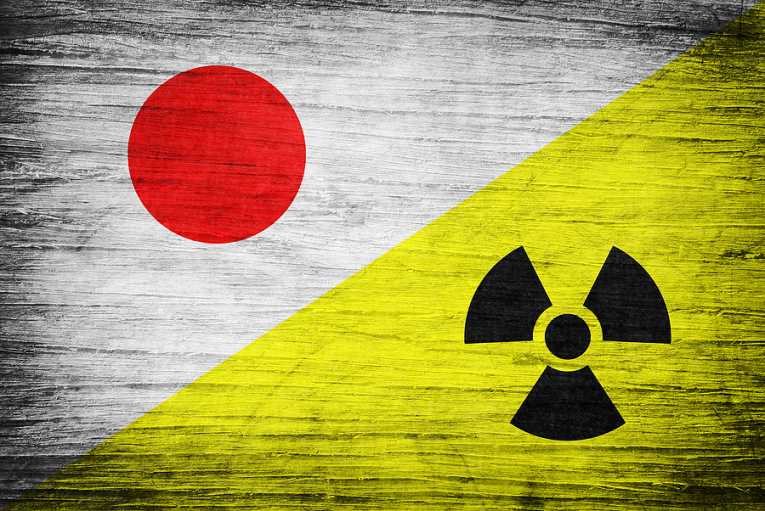Fukushima may have cast a threatening nuclear pall over Japan; but the frantic attempts to cool the plant with seawater may also have allowed scientists to take the pulse of a poorly understood piece of the climate puzzle. And those early measure to control the ongoing meltdown have also provided the first direct measure of the radiation leaking from the stricken plant. Those are the twin revelations from a study out today on the website of the Proceedings of the National Academy of Sciences.
After this March's devastating tsunami in Japan, the nuclear plant's overheating reactor cores were sprayed for 13 days with cooling seawater. That kicked off a nuclear reaction which pumped out an unstable form of sulfur.
The paper's authors were able to pick up traces of this sulfur way across the Pacific, in California, many days later. The data gathered may help scientists to get a better handle on sulfate aerosols - an important player in the planet's climate.
Salty sulfur
Sulfate particles form from gases emitted widely from cars, stoves and coal-fired power stations, and are thought to be a counterpoint to global warming - they reflect the sun's energy, and help to cool things down a little. Unwittingly, the same sulfates were produced by the desperate actions of the Fukushima workers, as the plant was dangerously overheating - courtesy of the salt in the seawater they were using.
The disabling of the cooling systems forced them to pour vast quantities of seawater onto the problem reactors. Salt is sodium chloride, and when the dissolved chlorine was bombarded with neutrons from the exposed fuel rods, it was transformed it into an unstable form of sulfur - sulfur-35. As the seawater boiled to steam, it was vented off to prevent explosions. That steam took with it the newly created sulfur-35.
Unprecedented spike
It was that mildly radioactive form of sulfur that was picked up by the University of California team at La Jolla, California, on the 28th March, some 2 weeks after the tsunami. Normally the monitoring of sulfur-35 is for more benign reasons - picking out the turbulent events that cause the upper atmosphere to mix into the air nearer the surface, so-called stratospheric incursions. But the kick on the monitors at La Jolla was 300 times more than the background level, and nearly twice as high as any previously recorded spike, leading the researchers to suspect Fukushima.
By rewinding the NOAA atmospheric models for the previous weeks, they were able to see where the air mass containing sulfur-35 had come from. And that analysis laid its origin squarely over north-east Japan, at the time that Fukushima was still being sprayed with sea-water. Because the half-life of sulfur-35 is precisely known, as was its track over the Pacific, the researchers realized they could use their measurements to work out the radioactive footprint of Fukushima.
Neutron flux numbered
"You know how much seawater they used, how far neutrons will penetrate into the seawater and the size of the chloride ion. From that you can calculate how many neutrons must have reacted with chlorine to make radioactive sulfur," said Antra Priyadarshi, first author of the paper. Their calculations suggested 400 billion neutrons were emitted per square meter before March 20th, when the recovery team switched to using fresh water.
But as well as providing the first concrete number for how radioactive the Fukushima disaster was, the work also allowed for some useful insights into the modeling of sulfur as it moves around the atmosphere.
Tracking sulfur with 'radioactive clock'
Lead author, Mark Thiemens, said "A big issue with sulfates is the time it takes for transport around the hemisphere. One may use satellites and models, but a radioactive clock, as provided by Fukushima, is just that - with such an exact time and place of release, it was unprecedented. We learned about much cross-Pacific transport, and in a completely novel manner."
The understanding of how sulfur gas oxidizes, and then becomes tiny solid particles of sulfate, is poor - but has been boosted by this study. 'We are also doing these radioactivity measurements of the rate of gas-to-particle conversion. It is a major issue, and we are obtaining direct results on this process for the first time,' said Thiemens.
With the effect of sulfates on the climate becoming more of a hot potato - with a recent study suggesting Chinese sulfate emissions helped to slow climate change for the last decade - nailing down such details is critical for those seeking to map out the journey we are pushing on the planet by our activities.
Interviewed and written by Martin Leggett
Top Image Credit: © lznogood















